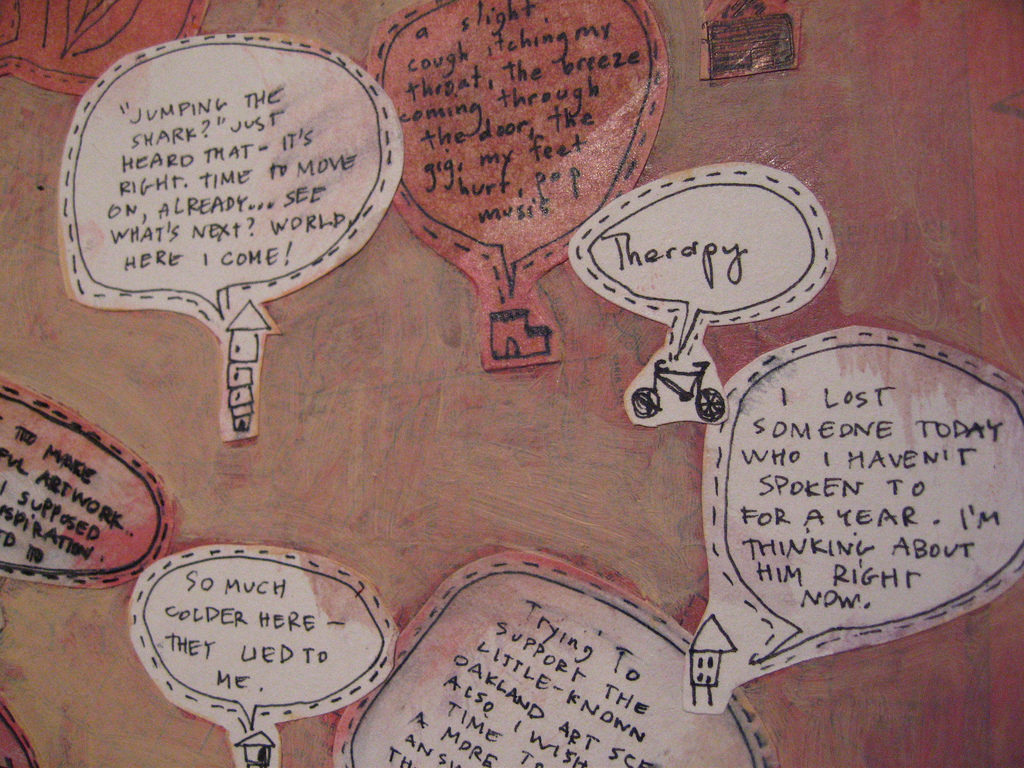A new research study delves into the mechanics of treatment configurations for adolescents receiving interpersonal psychotherapy for depression. Although past research has established the value of tailoring treatment frequency and intensity to individual patient needs throughout treatment, the new article, published in the Journal of the American Academy of Child & Adolescent Psychiatry, elaborated by comparing critical decision points in assessing symptoms.
The authors, led by Meredith Gunlicks-Stoessel and colleagues (a collaborative effort representing the University of Minnesota and Columbia University College of Physicians & Surgeons), identified the 4-week mark as a critical decision point in a 16-week treatment progression for interpersonal psychotherapy for depressed adolescents (IPT-A).

Research suggests that over the course of a year, 11% of adolescents meet criteria for a depression diagnosis. The experience of depressive symptoms can influence the quality of life across emotional, interpersonal, and educational domains for teens. Although psychotherapy, antidepressant medication, and some combination of the two represent common treatment modalities, psychotherapy has been found to be less effective for depression than for all other common childhood psychiatric disorders. Alarmingly, the authors highlight that among adolescents treated for depression across multiple intervention-types, only 30-50% experience relief from symptoms.
The National Institute for Health and Care Excellence’s (NICE) recommendations for the treatment of depression include multiple psychosocial interventions (e.g., counseling, CBT, behavioral activation, interpersonal therapy, short-term psychodynamic therapy, and behavioral couple’s therapy). Clear guidelines have been crafted outlining systematic shifts in pharmacological treatment schedules for depression based on individual patient responses to intervention, but guidance regarding assessment and changes in treatment in the context of psychotherapy is limited.
“At the time of the conceptualization of the current study, the National Institute for Health and Care Excellence (NICE) guidelines recommended a multidisciplinary team review for adolescents with mild depression who have not responded to psychotherapy after 3 months, and review after 4 to 6 sessions for adolescents with moderate to severe depression, but did not operationalize response or provide guidance regarding how to adapt the treatment plan for non-responders,” the authors write.
Gunlicks-Stoessel’s investigation was designed to provide insight regarding the appropriate timing of symptom assessment in the treatment of depression as well as shifts in treatment delivery based on each unique patient. To do so, the researchers conducted a pilot sequential multiple assignment randomized trial (SMART). The SMART methodology allows for randomization of multiple study features over time at critical decision points.
Participants included forty adolescents 12 to 17 years-of-age diagnosed with depression in the Minneapolis metropolitan area. Eligibility to participate was determined through a preliminary phone screening and an in-person baseline evaluation to assess the clinical significance of depressive symptoms. All adolescents who met inclusion criteria were enrolled in a 12-session psychotherapy intervention administered over the course of 16 weeks. Researchers selected the IPT-A, an intervention designed to target relational symptoms of depression in areas including grief, role disputes, role transitions, and interpersonal deficits, due to evidence of its impact in past research.
“The primary aim of the present article is to report the clinical and psychosocial outcomes of the study, and to compare the efficacy of the week 4 versus week 8 decision point for identifying and augmenting treatment for potential insufficient responders to IPT-A,” the authors explain. “In secondary exploratory analyses, we also examined the clinical and psychosocial outcomes of each of the four IPT-A algorithms.”
All participants were evaluated at both 4-week and 8-week points in the treatment trajectory, and randomly assigned an increase in medication (fluoxetine) or treatment dosage if gains were deemed insufficient according to predetermined criteria at both points. An increase in treatment dosage meant doubling the number of remaining sessions.
“In the current study, we found that the earlier time point for assessing and identifying potential insufficient responders (week 4) was more efficacious in reducing adolescents’ depression symptoms than the later week-8 time point. Thus a ‘sooner rather than later’ approach appears to be the best approach for catching potential insufficient responders to IPT-A.”
Gunlicks-Stoessel and colleagues found that treatment effects were more significant when assessments occurred at the 4-week mark (with interventions adjusted, as needed) compared to the 8-week mark in both antidepressant and psychotherapeutic booster conditions. Results indicate that an increase in dosage (based on symptom assessment) soon after the start of treatment can positively affect effects.
However, a larger-scale examination with a more diverse sample of participants should be conducted to determine the generalizability of these findings. Future research is needed to solidify treatment algorithms for various forms of psychotherapy, and, more broadly, to reduce haphazard treatment strategies and increase consistency in empirically supported intervention.
****
Gunlicks-Stoessel, M., Mufson, L., Bernstein, G., Westervelt, A., Reigstad, K., Klimes-Dougan, B., . . .Vock, D. (2019). Critical Decision Points for Augmenting Interpersonal Psychotherapy for Depressed Adolescents: A Pilot Sequential Multiple Assignment Randomized Trial. Journal of the American Academy of Child & Adolescent Psychiatry, 58(1), 80-91. (Link)















“Alarmingly, the authors highlight that among adolescents treated for depression across multiple intervention-types, only 30-50% experience relief from symptoms.” Isn’t this evidence that the current psychiatric and psychological methods are not effective? So maybe the intrusive, “omnipotent moral busy body” “mental health professionals” should stop attacking, stigmatizing, and neurotoxin poisoning little children?
What’s rather sad is the general public is largely unaware of the ineffectiveness of our “mental health professionals” current paradigms of care.
But I do have a suggestion. Perhaps, if our “mental health professionals” changed their DSM, so that they could actually get insurance reimbursement for truthfully addressing matters such as child abuse.
https://www.psychologytoday.com/us/blog/your-child-does-not-have-bipolar-disorder/201402/dsm-5-and-child-neglect-and-abuse-1
Rather than denying this societal problem, and stigmatizing child abuse survivors en mass as “depressed” etc., due to your inability to bill insurance companies for actually addressing such crimes, you’d see better results if you actually helped people with their real life problems.
https://www.madinamerica.com/2016/04/heal-for-life/
Because, let’s be real, symptoms of child abuse are not a brain disease, they are symptoms of a crime. And the psychiatric drugs don’t actually cure people from distress caused by a crime. I know this is a difficult concept for the “mental health professionals” to grasp, however.
Trust me it took countless “mental health professionals” and a quote from an orthopedic surgeon, “antipsychotics don’t cure concerns of the abuse of one’s child,” to finally embarrass one psychiatrist into weaning me off drugs that were making me ungodly ill.
I had no idea at the time, that the primary actual societal function of our “mental health” industry, both historically and today, is silencing child abuse survivors.
https://en.wikipedia.org/wiki/The_Freudian_Coverup
And the “mental health professionals” have spent that last several decades turning millions and millions of child abuse survivors, into the “mentally ill” with the psychiatric drugs. Which, by the way, is illegal since you’re all mandatory reporters. Not to mention, pretty much so evil, that most people wouldn’t be able to even believe our “helping professionals” are actually doing this.
I’m quite certain our society as a whole would be better served if the police started arresting the child rapists, rather than our society perpetuating a multibillion dollar, primarily child abuse covering up, group of scientifically “invalid” “mental health” industries.
But at least if you made helping child abuse survivors a billable DSM disorder, this would be a step in the right direction. If our “mental health professionals” actually want to help “depressed” children with their real life problems.
Report comment